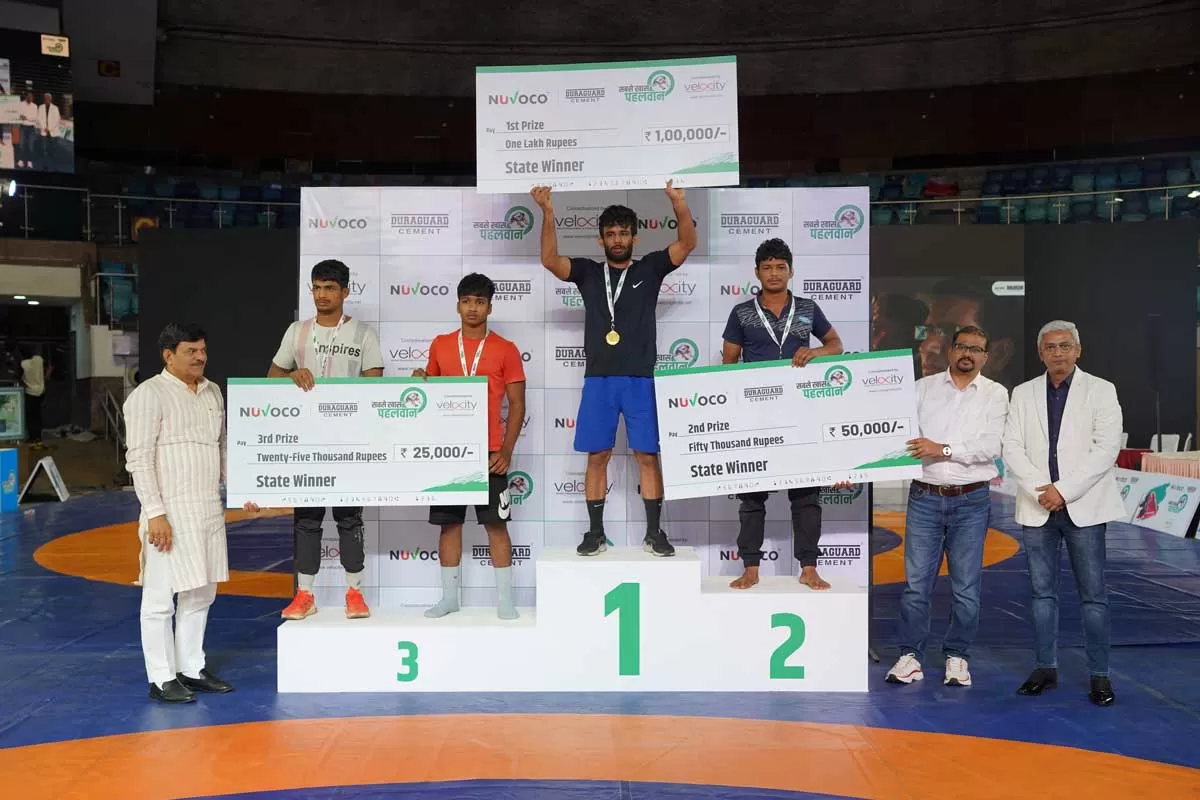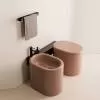Longest stretch opened in Delhi Metro's Phase-3 - Read all about the 24.82-km Janakpuri West-Kalkaji Mandir section of Magenta Line
01 Nov 2018
8 Min Read
Editorial Team
A jewel of India's metro-rail story, Delhi Metro has consistently been making headlines. The most recent came with the opening of the Janakpuri West-Kalkaji Mandir stretch of the Magenta Line. With construction work having commenced in phases in 2012, the first section of the entire stretch (from Kalkaji Mandir to Botanical Garden) was opened in December 2017, while the rest was completed in May 2018. The overall construction cost of Delhi Metro's Phase-3 has been about Rs 450 billion. On the 24.82-km corridor from Janakpuri West to Kalkaji Mandir, there are 16 stations, of which two are elevated, while the others are underground. The section is characterised by multimodal integration, including drop off points for e-rickshaws and auto rickshaws, bus bays, and paid area connectivity with earlier stations. <p></p> <p> <span style="font-weight: bold;">Equipment and technologies</span><br /> While the total underground stretch is 21.8 km, the elevated section is 2.9 km. 'The underground stations were built through the cut-and-cover method', says <span style="font-weight: bold;">Anuj Dayal, Executive Director, Corporate Communication, Delhi Metro Rail Corporation (DMRC). </span>For the tunnelling work of the corridor, tunnel boring machines (TBMs) were used, while for the construction of the elevated stretches, launching girders were used to launch the segments. </p> <p> Nine pedestrian subways have also been constructed on the Outer Ring Road, which are part of the entry and exit structures of the stations. </p> <p> The subways were built using box-pushing technology without any excavation. The new metro tunnel at Hauz Khas is about 29-m-deep at a point just after the station; this has passed 3 m below the existing tunnel. Proper measures were taken to prevent any movement of the existing tunnel. Settlement chances were prevented through grouting. </p> <p> A D-wall was constructed around the existing tunnel to provide support while the new tunnel was being created. Adequate instrumentation to monitor the movement of the existing tunnel was also done.</p> <p> Some building materials used in the construction of the project include concrete of grades M40, M50 and M60; cement of grade-53; fly-ash bricks; and TMT 500 rods.</p> <p> <span style="font-weight: bold;">Planned for convenience</span><br /> Passenger convenience has been given utmost priority in planning the structures. Multimodal integration has been done in most stations where drop-off points for e-rickshaws, auto rickshaws, etc, have been provided. Bus bays have also been provided wherever feasible. The interchange stations at Janakpuri West and Hauz Khas have paid area connectivity with the earlier stations. At Janakpuri West, escalators with the highest elevation in India (15.65 m) have been installed. All stations have escalators and lifts to connect the platforms with the concourse, and then the concourse with the entry and exit points. </p> <p> <span style="font-weight: bold;">Building green</span><br /> All stations of Delhi Metro's Phase-3 have been designed on environment-friendly lines.</p> <p><span style="font-size: 13.3333px;">'</span>Elements such as optimum use of natural light, adequate greenery around stations and the use of completely fireproof material have been incorporated in the stations,' says Dayal. All stations have been certified as 'Platinum' by the Indian Green Building Council (IGBC) for adherence to green building norms. Additionally, Delhi Metro also installs solar power plants on its stations and structures wherever possible.</p> <p> <span style="font-weight: bold;">Safety first</span><br /> Further, during construction work, all possible safety and environment protection measures were ensured. Dayal says, 'DMRC has a detailed safety, health and environment (SHE) manual, which lays down clear-cut guidelines to contractors.' Penalties are imposed on contractors if workers are found without proper safety equipment. Safety training and other sensitisation programmes are also mandatory for workers and regular inspections are held to check whether the sites are emanating dust. 'For senior citizens and the specially challenged, all stations have wheelchairs, lifts and escalators for smooth movement,' adds Dayal. 'Tactile paths have been provided to ensure that the visually challenged can easily move in the system.<span style="font-size: 13.3333px;">'</span></p> <p> Surpassing challenges Construction of the Hauz Khas station posed a massive challenge for the Delhi Metro team. As it was an interchange facility, the engineers also had to ensure that interconnectivity between the old and new portions of the Hauz Khas station were seamless and comfortable. The new station has been connected with the presently operational station through a ramp.</p> <p>The present station at Hauz Khas is 17-m-deep. For the construction of the new station, it was not possible to go below the existing station as the foundation is 32 m and there is also the foundation of the flyover on the Outer Ring Road. 'If the new station had to be constructed below the existing station, we would have had to go deep up to about 42 m, which would have been difficult,' shares Dayal. 'So, the new station has been built adjacent to the existing station at a depth of 29 m with a length of 265 m. It has been designed as a five-level station (rail-platform-intermediate-intermediate-concourse). </p> <p>Generally, interchange stations are limited to three or four levels.'<br /> Further, an old subway in the unpaid area of the station has been converted into a paid subway connecting the old and the new stations. It is about 40-m-long and 12-m-wide. Along with the interchange station, the underground corridor of the Janakpuri West-Botanical Garden line also crisscrossed with the already operational Yellow Line of the Delhi Metro network at Hauz Khas. Therefore, the tunnels of the new line also pass below those of the functional line. </p> <p>In Phase-2, the tunnel of the Airport Express Line had passed below the two-tier Rajiv Chowk Metro Station at a depth of about 45 m. However, that apart, such a feat had never ever been achieved in Delhi Metro in its first two phases. In Phase-3, apart from Hauz Khas, tunnels have been constructed below operational tunnels at three other locations. </p> <p> <span style="font-weight: bold;">The stretch</span><br /> The section comprises 16 stations including interchange facilities at Hauz Khas (with Yellow Line) and Janakpuri West (with Blue Line), and is part of the Magenta Line from Janakpuri West to Botanical Garden in Noida. The Hauz Khas station has been turned into an interchange station to facilitate interconnectivity between the Huda City Centre-Samaypur Badli (Line-2) and the Janakpuri West-Botanical Garden metro corridors. The Janakpuri West station on the Dwarka-Noida metro corridor (Line-3) has also been converted into an interchange station to provide additional connectivity to areas in South Delhi and Noida from West Delhi. The domestic terminals of the Indira Gandhi Airport have been given metro connectivity for the first time, and the Airport Express Link has provided metro connectivity to the new T3. </p> <p>The Magenta Line is indeed a boon, especially for the city's student community, and can be called the Delhi Metro's 'Knowledge Corridor'! The new corridor connects four major universities, which were not connected by the metro so far. </p> <p>This includes the Jawaharlal Nehru University and the Indian Institute of Technology (IIT). <br /> Magenta is now the capital's go-to colour!</p> <p> <span style="font-weight: bold;">Project Details</span><br /> <span style="font-weight: bold;">Location:</span> New Delhi.<br /> <span style="font-weight: bold;">Total length:</span> 24.82 km (Janakpuri West-Kalkaji Mandir).<br /> <span style="font-weight: bold;">Completion date: </span>May 28, 2018 (Stretch made operational).<br /> <span style="font-weight: bold;">Total cost:</span> Rs.450 billion.<br /> <span style="font-weight: bold;">Contracting agencies:</span> L&T. <br /> <span style="font-weight: bold;">Website:</span> www.larsentoubro.com; Pratibha Industries. <br /> <span style="font-weight: bold;">Website:</span> www.pratibhagroup.com; Hyundai Rotem. <br /> <span style="font-weight: bold;">Website:</span> www.hyundai-rotem.co.kr; SP Singla. <br /> <span style="font-weight: bold;">Website:</span> www.spsingla.com <br /> </p>


















